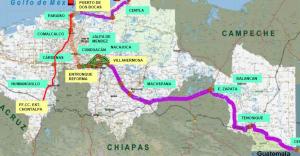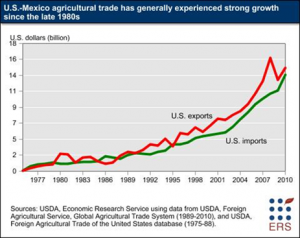A new project underway along the Gulf Coast of Mexico could reap windfall gains for U.S. farmers and agribusinesses, according to the U.S. Grains Council. The government-funded project, known as the Southern Gulf-Guatemala Strategic Corridor, will provide a key link between ports, distribution outlets and Central America in the form of improved and modernized four-lane highways, port expansions and the development of a rail spur to connect the ports to the mainline. The improvement in infrastructure means U.S. products could be easily and more affordably transferred to end-users in remote states like Chiapas and Tabasco.
Since the implementation of North American Free Trade Agreement, agricultural trade growth in Mexico has expanded nearly 9 percent per year, almost double the pace prior to the agreement. With trade growth, comes infrastructure development—in turn, prompting more growth. Upon return from a recent sorghum market assessment, USGC Manager of International Operations Kevin Roepke commented that economic growth in Central America is creating opportunity for much greater things.
“Grocery chains like Chedraui and Soriana, as well as multinationals like WalMart, have all recently built distribution centers along the corridor in anticipation for immediate delivery from U.S. Gulf Ports with the final destinations ultimately in Central America,” he said
 “Transportation and logistics is one of the most important drivers in trade—and thusly the most difficult piece. The Council is working with end-users on the nutrition and demand pieces. The end result could be a tremendous example of how international trade works to lever itself to improve all industries—whether they are technically related, or not.”
“Transportation and logistics is one of the most important drivers in trade—and thusly the most difficult piece. The Council is working with end-users on the nutrition and demand pieces. The end result could be a tremendous example of how international trade works to lever itself to improve all industries—whether they are technically related, or not.”
Julio Hernandez, USGC director in Mexico said the Council has extensively looked at opportunities for U.S. distillers grains, corn and sorghum in the Southeastern portion of Mexico. Council sources estimate that as many as 4 million head of dual purpose cattle are in the area—most of which survive on roughage based diets.
“Having greater access to the U.S. feed grain will provide able opportunity to U.S. penetration,” said Hernandez.



